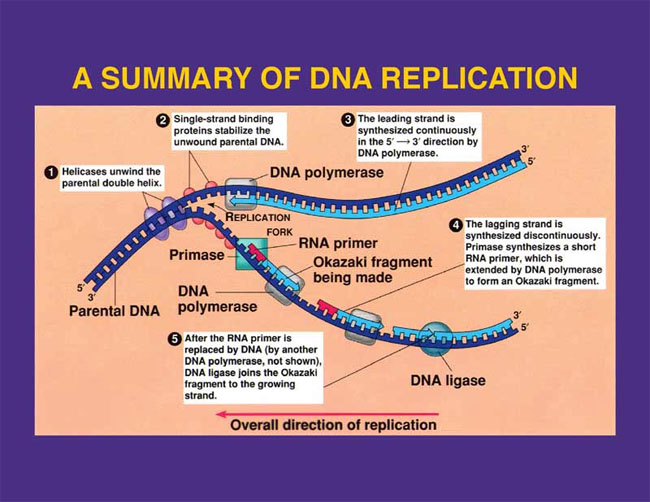CHAPTERS 16 – 20
THE SEARCH FOR THE GENETIC MATERIAL:
X-RAY CRYSTOLLOGRAPHY: is a process used to visualize molecules three-dimensionally. X-rays are diffracted as they pass through the molecules and they bounce back to produce patterns that can be interpreted through mathematical equations. Through technique the structure of DNA was first visualized.
DNA is a double helix, which can be described as a twisted ladder with rigid rungs. The side or backbone is made up of sugar-phosphate components. Whereas the rungs are made of pairs of nitrogenous bases:
The nitrogenous bases of DNA are adenine (A), thymine (T), guanine (G), and cytosine (C). In DNA, adenine pairs only with thymine, and guanine pairs only with cytosine. Adenine and thymine are able to form two hydrogen bonds between them in DNA, and cytosine and guanine form three hydrogen bonds. ** There is a triple bond between the cytosine and guanine and a double bond between the adenine and thymine. (This results from the two strands [or backbones] on either side of the double helix being anti-parallel.) **
EVIDENCE THAT DNA IS THE GENETIC MATERIAL
Erwin Chargaff, a biochemist, analyzed the base composition of DNA from a number of different organisms. In 1950, he reported that the base composition of DNA varies from one species to another. This evidence of molecular diversity among species, which had been presumed absent from DNA, made DNA a more credible candidate for the genetic material. The number of adenine is the same as the number of thymine.
DNA REPLICATION AND REPAIR:
DNA replication is semi-conservative. This means that at the end of its replication, each daughter molecules has one old strand, derived from the parent strand of DNA, and one strand that is newly synthesized.
The replication of DNA begins at sites called the origin of replication.

Initiation proteins bind to the origin of replication and separate the two strands to create a replication bubble. DNA replication then proceeds in both directions along the DNA strands until the molecule is copied.
An enzyme called DNA polymerase catalyzes the elongation of new DNA at the replication fork, but there are dozen or more enzymes and other proteins also involved in the process of DNA replication.
DNA polymerase adds nucleotides to the growing polypeptide chain one by one, and each nucleotide loses two phosphate groups. Which are subsequently hydrolyzed in an exergonic reaction to fuel the process of polymerization.
The strands of DNA are antiparallel, meaning that their sugar phosphate backbones run in opposite directions. This means that DNA replication occurs continuously along one strands. Which is called leading strand, and discontinuously along the other strands, the lagging strand.
Review Questions:
(1) Of DNA and RNA, which is more likely to have mutations?
(2) The 'rungs' of DNA consist of which type of bases?
(3) There is a __(a)__ between the cytosine and guanine and a ___(b)___ between the adenine and thymine.
Answers:
(1) RNA
(2) Nitrogenous Bases
(3) (a) triple bond
(b) double bond

No comments:
Post a Comment